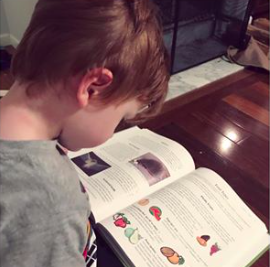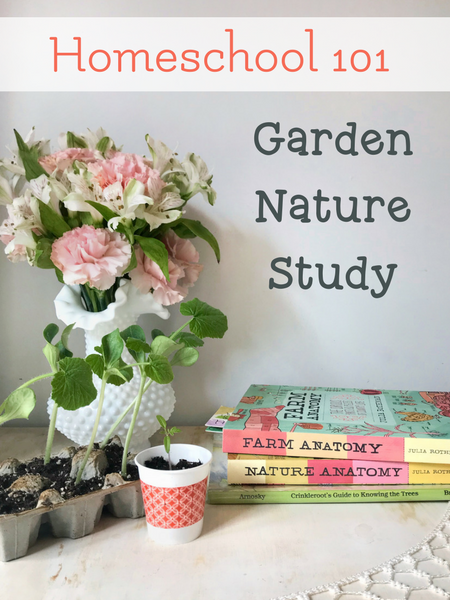
Homeschool Gardening Unit Study
For some, gardening is a sort of escape from every day life. And that’s ok! I'm one of those people. I love digging into the dirt, pruning, tending, and simply enjoying my gardens as a way to clear my head and refresh my soul.
Homeschool plants many seeds in our children's minds and hearts. We can also teach them many valuable lessons by actually planting seeds together!
Inviting your family to join in the efforts of planting and maintaining a garden has many benefits, too. You’ll be splitting the work load, but even better than that you’ll be enjoying all the advantages of a garden together. I believe that the family that gardens together, grows together. By digging into a gardening unit, you can teach your family plenty of valuable life lessons.
Nature study through gardening adds a whole new element of observation and care. The opportunity to learn about plants that help and hinder each other's growth, to observe spiders, insects, and birds and how they interact with the plants, and to revel in the delights of freshly plucked produce grown by your own hands is something a child will never forget.
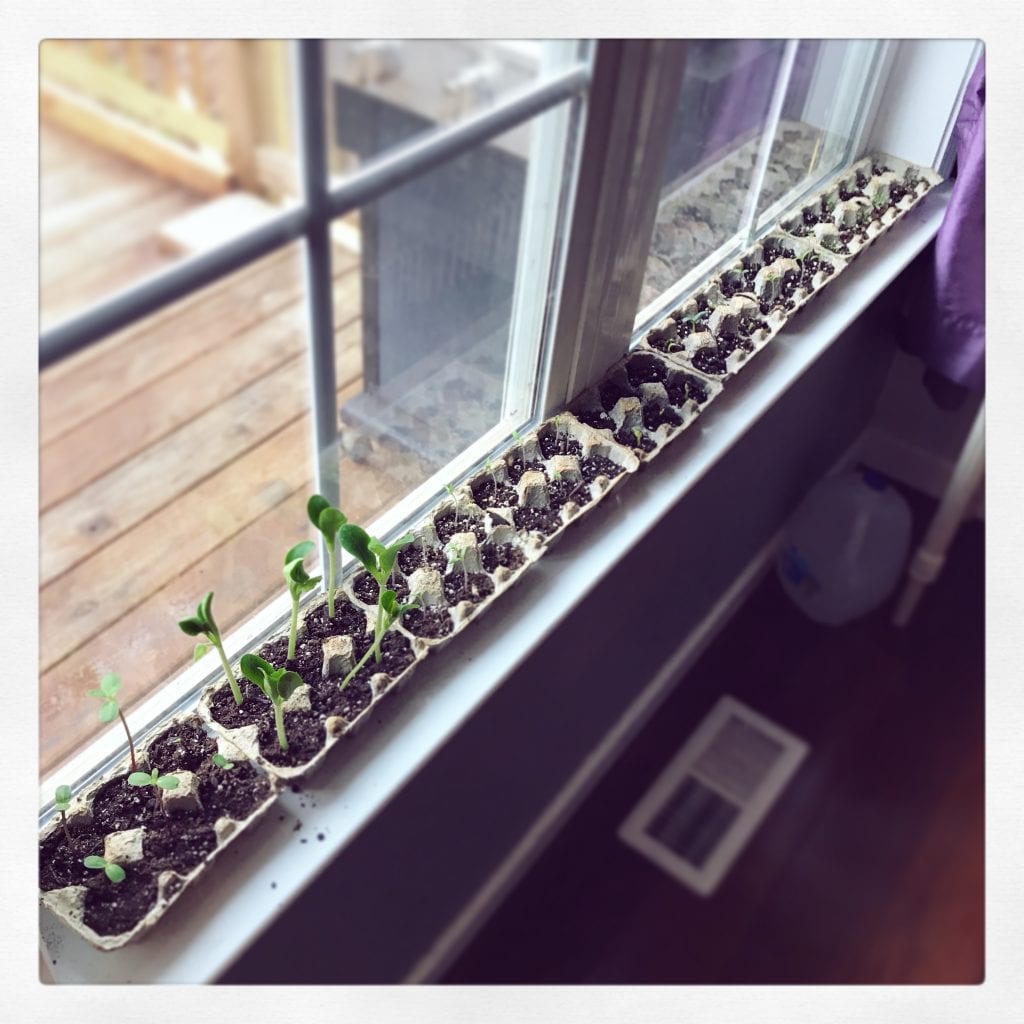
We generally grow vegetables in our main garden with a few companion flowers to encourage pollination. To start your garden unit nature study, try choosing some seeds for plants that do well in your growing zone. Don't know what zone you're in? You can find that information here at The Old Farmer's Almanac.
You also need to know about your soil. The pH of your soil is something that can help or hinder your growing and you may need to test it to find out how to amend it. There's a fun experiment in our Garden Journal to help you figure this out.
Most seed packs will tell you on the back when and how (indoors or directly) to sow them for your growing zone. If you have a lot of wildlife in your neighborhood, you may want to look for things that are resistant to being decimated by your local fauna. We have to have deer-resistant crops here in middle Georgia.
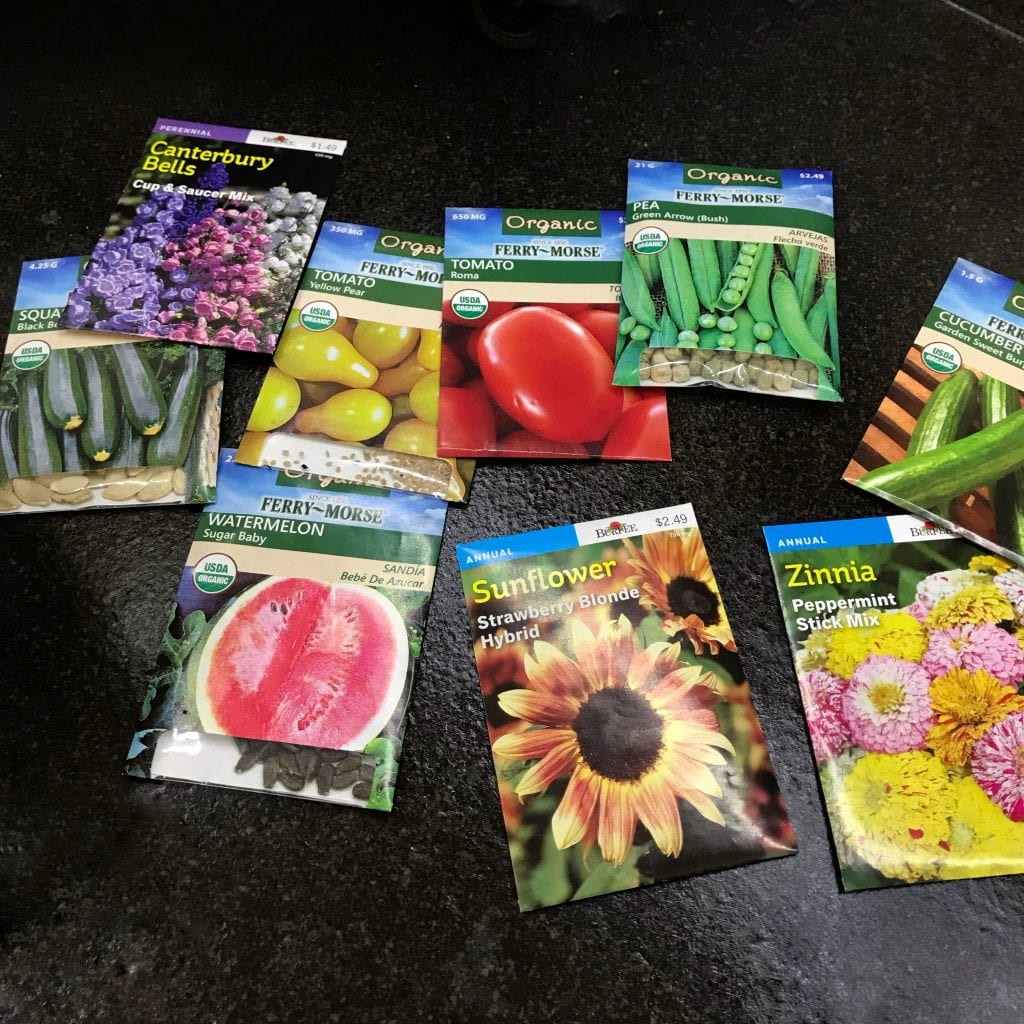
Then you'll plot out your garden space and when to plant which seeds or nursery starter plants. There are so many options! A square foot garden, a pizza garden, an herb garden, a kitchen garden, a cottage garden, a butterfly garden, a container garden, and I could go on and on! If you plan it well, you can have something growing most every season. That's pretty incredible! Also, companion planting is very beneficial and there is a very simple guide here that explains what to plant together.
Track when you plant, observe when your seeds germinate, and record when your plants begin to produce. This will give you an excellent frame of reference for the following years. If you want to gather extra data, you can also note the weather patterns and temperatures and make notes of which crops do best in those conditions. Track how often you need to weed and prune to keep your garden at its healthiest.
As the seasons wind down and you begin to harvest, make note of the first fruits, how long each plant produces, and the volume of harvest. You can also look back to see if fertilizing helped increase your yields, if your soil pH changed over the season, and if you had any pest issues. If you do have pests, we love these natural ways to treat for them.
Most of all, enjoy the time in God's glorious creation!
Our My Garden Journal is a wonderful addition to your gardening homeschool curriculum!
Primary lined pages are included for a kindergarten garden unit if you have little ones who want to join in the garden fun! This is also a great way to document a square-foot gardening homeschool curriculum. Mel Bartholomew's book in the list below is excellent!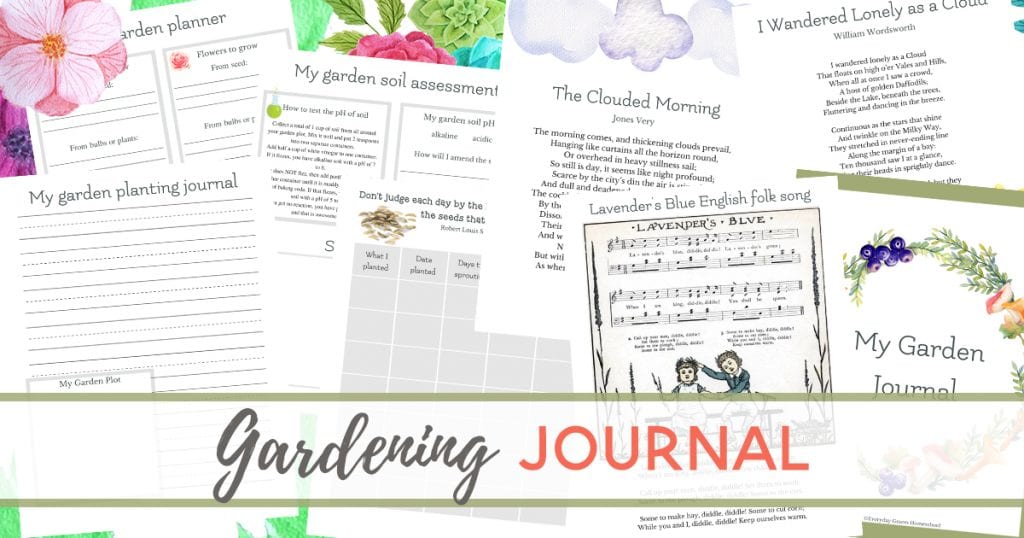
Find Book Resources for Your Gardening Unit Study at our Amazon Shop Here.
To give you an idea of how delightful the Apologia Botany book from our list is, here is Mr. F reading it during free read time! A textbook can be a living book if it's written delightfully by a passionate author, and Jeannie Fulbright is definitely that!
Including Flower Gardening in your Garden Unit Study
I love flowers. There’s just something about them that lifts my spirits. For me, that’s all the reason I need to put in the time and effort to plant a flower garden. Here are some excellent reasons to add flowers to your homeschool gardening curriculum.
A flower garden is a low-cost pastime.
Seeds are very inexpensive, and there are plenty of seasoned gardeners out there who would happily pass along some bulbs to get you started. There’s also the bonus that with just a little bit of mulch and manure worked in every year and some tender, loving care, your perennial flowers will multiply all on their own. I have a garden full of bearded irises and daylilies to prove it!
A flower garden is beneficial to your health.
Gardening is an excellent way to get active and soak up some fresh air and sunshine for kids and moms. It’s hard work, but it’s fulfilling and rewarding work and helps to teach patience, responsibility, and gives your children the opportunity to take pride in their effort, not just the results. Researchers have found that working a garden reduces the production of cortisol, the stress hormone. That means it is extra beneficial for homeschool moms ;) Not only that, but the resulting flowers are sure to brighten even your gloomiest days.
A flower garden invites the bees and the birds and the butterflies.
Bird are great for keeping those nasty pests away, and along with butterflies, are beautiful to admire. Meanwhile, butterflies and bees are essential to life itself! We need them for their pollinating skills, so planting bee- and butterfly-friendly flowers is just a good idea in general. Companion planting certain flowers with certain crops is a great way to ensure excellent pollination.
A flower garden is a visual delight.
Oh the stunning, uplifting colors of spring just chase the winter blues away! Every morning you’ll find yourself checking on the coming blooms. The beauty doesn’t have to stay outdoors, though. Cut the perfect bouquet to fill your favorite vase and display on your kitchen table any time you want.
We find flowers to be a wonderful addition to our dining table all year and the whole family loves them! We grow irises, roses, rosemary, lavender, coneflowers, zinnias, and other blooms that are wonderful for cutting and bringing indoors.
A flower garden is good for the environment.
Flowers consume carbon dioxide while giving off oxygen thanks to photosynthesis. Plants are so amazing and a beautiful part of God's design! And remember, you’re also encouraging the bee population which has been struggling as of late. We always try to plant lots of bee-helping flowers for our little winged friends.
You can create fun fairy and gnome gardens to help encourage even your youngest and most dirt-averse children to plant something wonderful!
Fairy and Gnome gardens are such a delight to both young and young-at-heart. It's a great way to add a little personality to a container garden or to outdoor space. It also makes for a simple introductory gardening unit study for caring for a small plot of their own. Children thrive when they are given a responsibility that really is their own.
Ownership of a tiny garden is a big adventure. This is Mr. F's gnome garden. He catches snails, puts them down the slide, and keeps hoping they will stay. They never do, but the pea seed he planted is growing nicely now! The moss with tiny flowers we dug up out of the yard. He thought the flowers were cute. The moss did root (thankfully), and now it's still blooming weeks later.
Our children are the fruit of our life gardens. By tending to them and teaching them to carefully tend and care for their own, we are creating a legacy of incredible beauty and tenderness for the generations to come. All by having a little dirt under our nails and a lot of laughter with those we cherish the most.

